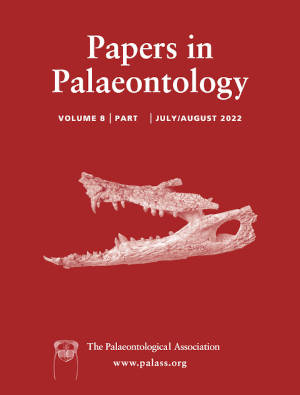Article: Microstructural description of the maniraptoran egg Protoceratopsidovum
Publication: Papers in Palaeontology
Volume:
8
Part:
2
Publication Date:
2022
Article number:
e1430
Author(s):
Seung Choi, Daniel E. Barta, Miguel Moreno-Azanza, Noe-Heon Kim, Colin A. Shaw, and David J. Varricchio
DOI:
10.1002/spp2.1430
Abstract
Abstract Since their discovery in the 1920s, some asymmetric, elongated dinosaur eggs from the Upper Cretaceous of Mongolia have been interpreted as ceratopsian eggs. However, recent views support a maniraptoran affinity mainly based on macroscopic features. Technical advancements in palaeontology provide a novel approach to diagnose maniraptoran eggs, and the discovery of soft ceratopsian eggs makes the debate a timely issue worth revisiting. Here, we analysed Protoceratopsidovum eggshell from southern Mongolia with electron backscatter diffraction and the results were compared with East Asian and North American maniraptoran and ornithischian eggs. The microstructure and crystallography of Protoceratopsidovum confirms the maniraptoran hypothesis, given that it shows diagnostic features of the clade absent from ornithischian (e.g. hadrosaur) eggs. Additional characters, such as egg shape, ornamentation, egg pairing and clutch structure also support a maniraptoran affinity. Protoceratopsidovum has both elongatoolithid (oviraptorosaur egg) and prismatoolithid (troodontid egg) features, and it may bridge the morphological gap between the two established oofamilies. Considering the similarity between Protoceratopsidovum and potential dromaeosaur eggs, at least some Protoceratopsidovum may be deinonychosaur eggs. Fossil localities that yield both deinonychosaurs and Protoceratopsidovum may yield conclusive evidence for the true affinity of this ootaxon. Future discovery of the egg-laying taxon of Protoceratopsidovum will not only improve our understanding of maniraptoran reproductive biology but also make Protoceratopsidovum a reliable indicator of the palaeobiogeography of that maniraptoran clade.
